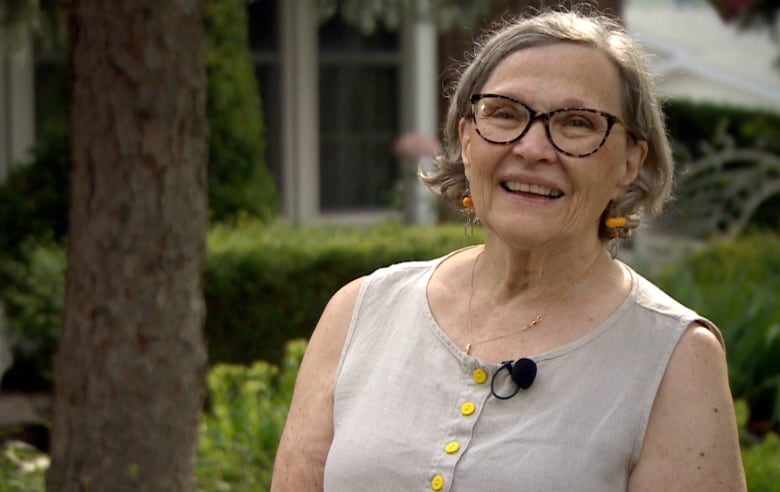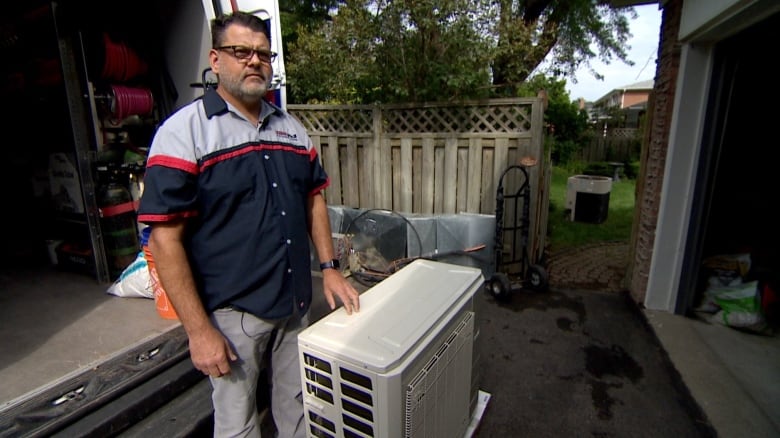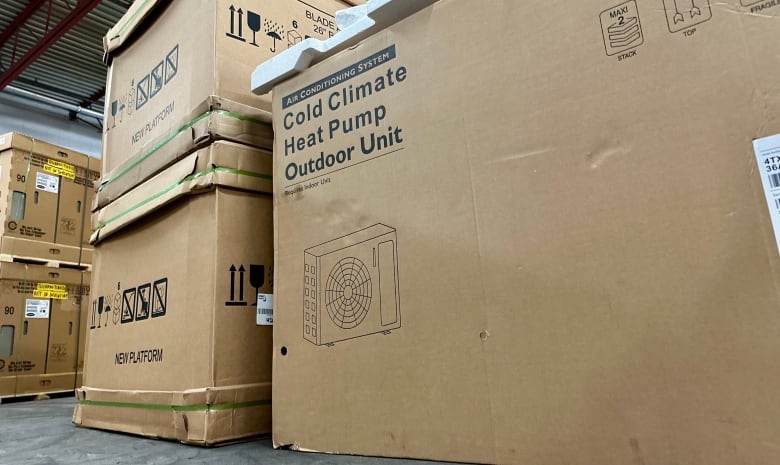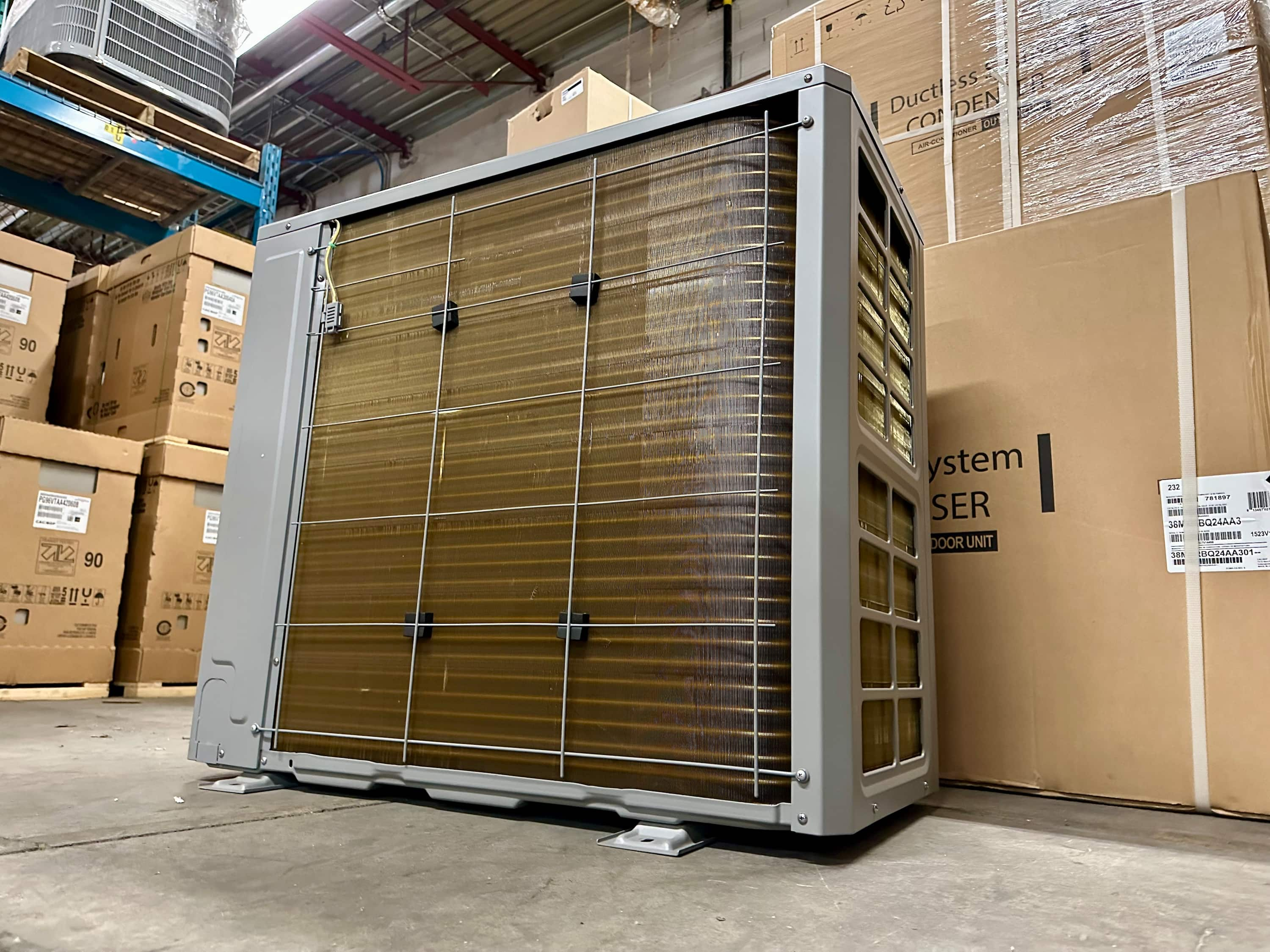Luise Cox is upgrading her 1960s bungalow in Mississauga, Ont., this week tearing and pulling the old air conditioner and natural gas furnace. Instead, crews are replacing those units with a brand new heat pump (and some extra insulation in the attic, too).
“We needed to improve, and for the environment it’s better,” the 85-year-old said. “We are spending a lot on heating and cooling, so hopefully this will help.”
The heat pumps, which have been promoted for years, have failed to gain traction with the public. But that has started to change with rising temperatures, improved technology and government discounts, among the reasons why.
HVAC specialist Peter Messenger says they’ve gone from 10 percent of his company’s installations to about half almost overnight.
“I’m surprised at how quickly the mindset of the general public on heat pumps has changed,” said Messenger, owner of A1 Air Conditioning and Heating in Oakville, Ont. west of Toronto. “I always knew it was going to happen, I just didn’t know it was going to happen so soon.”
He said heat pumps accounted for about 10 percent of his sales last year, but now account for about 50 percent.

Sales are growing so fast that Messenger said it wonders if heat pumps could even wipe out sales of new home air conditioners within a few years and put a significant dent in the number of natural gas furnaces.
A heat pump often looks like an air conditioner and can work in the same way. They cool a house by absorbing heat inside and releasing it outside. But unlike an air conditioner, they can turn the process into winter — heating a cool house without the need for a burner like an oven, transferring heat from where it’s not needed to where it is: inside.
“We will not sell air conditioners. Everything will be a heat pump” in a few years, Messenger said. “People can still keep their gas furnaces, but over time, I think we’ll see fewer and fewer gas meters in people’s homes.”

“The perfect storm”
Heat pumps existed for decades, and more than 400,000 were installed in Canada in 2000, but that number has doubled in the two decades since. However, a confluence of factors is driving an increase in sales this year.
The federal government’s $ 2.6 billion Canada Greener Homes Grant could help lower the purchase price by $ 5,000, while other provincial, municipal and utility deductions in some parts of the country could help further reduce the cost of installation.
There is a growing familiarity with the technology, companies say, and a growing interest from homeowners to reduce their environmental footprint. The supply chain problems in recent years no longer exist.
“It’s just the perfect storm of the right factors that are driving some of this,” said Greg Donahue, product manager with Reliance Home Comfort, which operates in five provinces between Ontario and British Columbia.
This year, sales of the company’s heat pump are up to seven times higher compared to 2022, he said.
“At the end of the day, if you’re looking to get a new heating and cooling system in your home, you’re going to get a better, more efficient heating and cooling system if you do a heat pump — and you’re going to get it for the same or often lower cost for the homeowner,” Donahue said.

Improving technology
Wildfire smoke and record-breaking heatwaves in parts of the country are also motivating more people to buy a new cooling system, just as heat pump technology has improved to the point where it is much more effective and efficient in a Canadian climate.
In Edmonton, increasing demand for heat pumps is reducing the number of new air conditioners being installed, said Collin Goodyear, General Manager of Romaniuk heating and air conditioning.
But not everyone is willing to go through it completely. Goodyear said people living in colder climates on the Prairie often choose to install heat pumps while keeping their ovens as a backup for those extra cold days.
“There are still those lower temperatures where the gas furnace is required, partly because of electric costs. “We still find it useful,” he said.
About 40,000 heat pumps have been installed or approved as part of the Federal Government’s Canada Greener Homes Grant, which was launched in 2021.
Government subsidies are still essential to making heat pumps economic, although those in industry say the price should continue to fall in the years ahead as producers ramp up production. The price of a heat pump can vary. The average cost to purchase and install a system can range from about $ 6,000 to $ 14,000, depending on the size of the home.
Another challenge could be installing heat pumps in multi-family buildings, like an apartment complex, depending on the existing heating, cooling and ventilation system.
Peter Messenger with A1 air conditioning and heating and Sara Hastings-Simon of the University of Calgary explain how heat pumps work.
Climate goals
The heating and cooling of buildings is responsible for about 13 percent of Canada’s greenhouse gas emissions. The federal government’s goal is to cut those emissions by 37 percent below 2005 levels by 2030, with an overall goal of reaching net zero by 2050.
The sharp increase in heat pump sales in Canada is reflected by what is happening in some other countries around the world, said Sara Hastings-Simon, an associate professor in the Department of geoscience and the school of Public Policy at the University of Calgary.
“There is a significant amount of infrastructure that needs to change to get to this net zero target,” she said.
It will take time for a major change in the way buildings are heated and cooled, but any new heat pump is a step in that direction and reduces emissions at the same time, Hastings-Simon said.
“It’s not just silver bullet technology coming, it’s actually that combination of technology is ready, there’s a really strong case for a consumer, and there’s some kind of government support — whether it’s incentives or policies that help to support that installation,” she said.
Heat pumps are electrical appliances that can reduce a home’s environmental footprint if you replace or reduce a heating unit that uses natural gas, propane, or furnace oil, or a less efficient air conditioner.
Savings can add up quickly. Replacing an oil furnace can save a homeowner up to $ 3,500 a year, according to a study by Natural Resources Canada about the cost effectiveness of heat pumps, depending on the region and type of home.
#Heat #pump #sales #hotterand #theyre #putting #demand #Ice #CBC #Neambs
